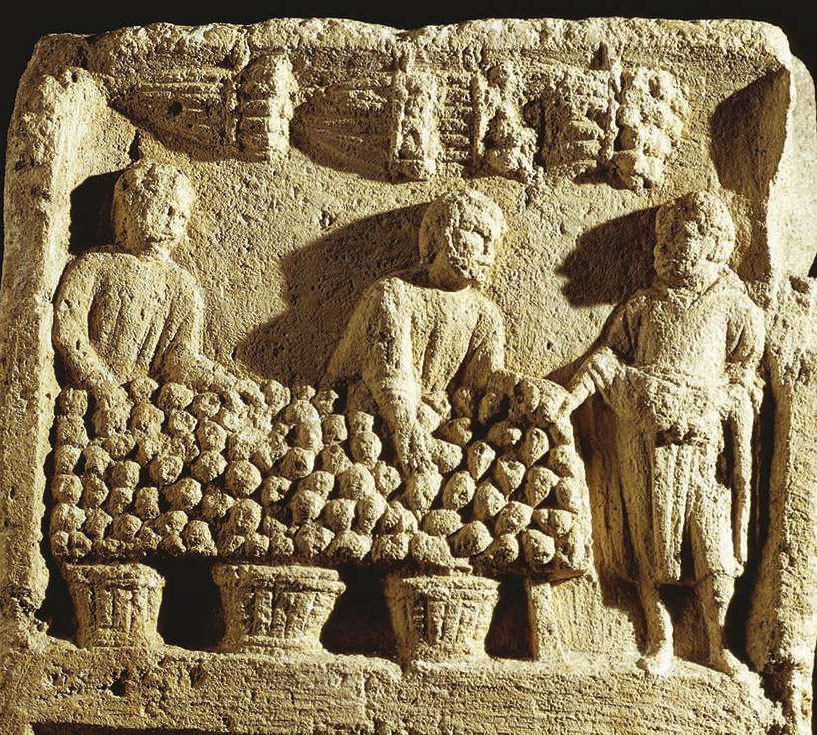
Slave markets – as shown in this engraving – were a staple of most Roman towns
ALAMY X2, GETTY IMAGES X1
The Roman Empire was hugely dependent on forced labour. It was a key foundation on which Rome’s power, wealth and influence was built. A great many slaves were set to work in menial and manual jobs – including agriculture, mining and construction. As historian Philip Matyszak explains, these types of jobs could be particularly brutal. “Being sent to the mines was a drawn-out death sentence,” he says “They worked in very dangerous, very unhealthy conditions lit by oil lamps, constantly breathing in fumes. They worked in a state of acute misery.” Unfortunately, those working above ground in agriculture fared little better. “They were treated by the farmers as part of the livestock; offered as much compassion as was given to the cattle, the sheep and the goats.”

Slaves who farmed produce, like the wares at this fruit market, were treated terribly
A SYMBOL OF STATUS
Some slaves, however, undertook work in what would now be considered white-collar jobs, such as teaching or accounting. For instance, middle-class Roman families, in their admiration of Greek culture, would often seek out educated slaves from Greece as home tutors for their children. Slaves from lands deemed to be of lesser cultural worth, such as Britain or Germany, were generally less attractive when it came to work that carried with it a level of responsibility.